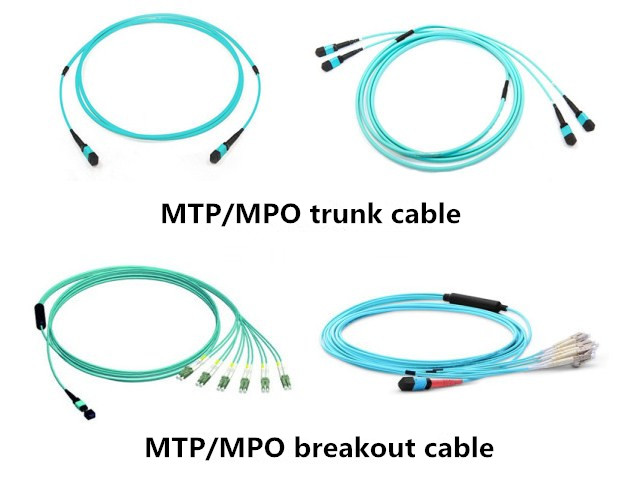It is not difficult to understand that MTP connectivity is widely applied in 40G and 100G network applications because it is a multifiber connectivity, which can meet the demand for high-density cabling. As a matter of fact, there is another key advantage of MTP connectivity, that is low-loss. With the length and type of the fiber cable, number of connectors and splices all contributing to the link loss, there is no doubt that insertion loss is inevitable during the cabling process. Therefore, cabling solution with low-loss will be preferred by data center managers, who are now regarding optical insertion loss budgets as one of the top concerns. But what contributes to low-loss in MTP connectivity? This post will show you the answer.
Typical MPO/MTP fiber connector, which is used for 40 and 100 GbE deployments, has insertion loss values that range from 0.3 dB to 0.5 dB. In addition, MPO/MTP connector is structured with MT ferrule which has low insertion loss and can provide accurate fiber alignment. Take 12 fiber MPO connector and 24 fiber MPO connector for example, with low-loss ferrules, the insertion loss of both two type of connectors can be rated at 0.35 dB maximum. Reading this, you may ask shouldn’t the result be that higher fiber count will lead to higher insertion loss? The answer is no. Because when using proper polishing techniques, 24-fiber MPO/MTP terminations can meet the same performance levels as 12-fiber MPO/MTP assemblies.
We know that OM3 and OM4 fibers used in MTP connectivity utilize 850 nm source, and IEEE 40GBASE-SR4 and 100GBASE-SR10 standards for 40 and 100 GbE over multimode fiber have more stringent loss requirements for these two types of fibers, which lowers the overall channel loss. As shown in the following table, as speeds have increased from 1 Gb/s to 40 and 100 Gb/s, maximum channel distance and loss has decreased significantly. For OM3 fiber cabling, the 40 and 100 GbE standards allows for a channel distance of 100 meters with a maximum channel loss of 1.9 dB, including a maximum connector loss of 1.5 dB; for OM4 fiber cabling, the distance is increased to 150 meters but with a maximum channel loss of 1.5 dB, including a maximum connector loss of 1.0 dB.

Note: Current TIA and ISO standards require a minimum of OM3 fiber, while TIA recommends the use of OM4 due to its longer transmission capabilities. In fact, the 100GBASE-SR4 standard that uses eight fibers (four for transmitting and four for receiving) at 25 Gb/s is anticipated to be supported by OM4 fiber to 100 meters, but to only 70 meters using OM3.
In today’s large virtualized server environments with high speed 40 and 100 gigabit Ethernet (GbE) backbone switch-to-switch deployments for networking and storage area networks (SANs), staying within the loss budget is essential for ensuring that optical data signals can be properly transmitted from one switch to another without high bit error rates and performance degradation. MTP connectivity, based on low-loss MPO/MTP connector, OM3 and OM4 fibers, is able to reduce the insertion loss to a minimum, which makes this low-loss multifiber connectivity take its place on the market. FS.COM provides high-quality MTP assemblies, such as MTP/MPO fanout cable, MTP MPO trunk cable, MTP cassette and so on. If you want to know more details, please visit our site.
